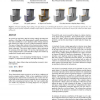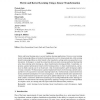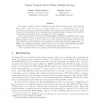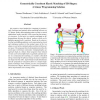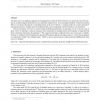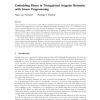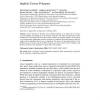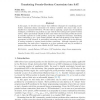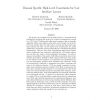TOG
2012
12 years 6 months ago
2012
We present an approach to high-level shape editing that adapts the structure of the shape while maintaining its global characteristics. Our main contribution is a new algebraic mo...
JMLR
2012
12 years 6 months ago
2012
Metric and kernel learning arise in several machine learning applications. However, most existing metric learning algorithms are limited to learning metrics over low-dimensional d...
COCO
2011
Springer
13 years 4 months ago
2011
Springer
We consider a system of linear constraints over any finite Abelian group G of the following form: i(x1, . . . , xn) ≡ i,1x1 + · · · + i,nxn ∈ Ai for i = 1, . . . , t and e...
ICCV
2011
IEEE
13 years 4 months ago
2011
IEEE
We propose a novel method for computing a geometrically consistent and spatially dense matching between two 3D shapes. Rather than mapping points to points we match infinitesimal...
IJAR
2011
13 years 7 months ago
2011
The basic idea of an algebraic approach to learning Bayesian network (BN) structures is to represent every BN structure by a certain uniquely determined vector, called the standar...
101
click to vote
GIS
2011
ACM
13 years 7 months ago
2011
ACM
Data conflation is a major issue in GIS: different geospatial data sets covering overlapping regions, possibly obtained from different sources and using different acquisition ...
JMMA
2002
14 years 3 months ago
2002
Convex polygons in the plane can be defined explicitly as an ordered list of vertices, or given implicitly, for example by a list of linear constraints. The latter representation h...
JSAT
2006
14 years 4 months ago
2006
In this paper, we describe and evaluate three different techniques for translating pseudoboolean constraints (linear constraints over boolean variables) into clauses that can be h...
CONSTRAINTS
2008
14 years 4 months ago
2008
We present the Auckland Layout Model (ALM), a constraint-based technique for specifying 2D layout as it is used for arranging the controls in a GUI. Most GUI frameworks offer layo...
IJCAI
2001
14 years 5 months ago
2001
We present a new approach to inferring a probability distribution which is incompletely specified by a number of linear constraints. We argue that the currently most popular appro...
